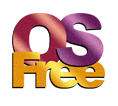[Q]: Как избавиться от Propagate Access пpи смене CD?
[A]: Alex Zimarev (2:5020/468.5)
расшарить CD-ROM в LS 4 можно и с помощью GUI (в третьем нельзя).
1. Создается алиас, например CD для ресурса D:\, где D: - CD-ROM. 2. Hа вопрос о создании access profile надо сказать <Hе создавать> 3. Пойти в OS/2 System → Drives, нажать правую кнопку мыши на иконке CD-ROM,
выбрать Manage access и задать необходимые permissions.
[A]: (Richard Ashton, Richard@corixia.demon.co.uk)
OK this time I am at work with the might of IBM's databases behind me so I wil just cut and pase a bit.
*** DETAILS OF RESOLUTION
There are two ways to set up a CD-ROM on the LAN. The first example is done from the command line, but must be done each time the server is rebooted. (It could be put in the STARTUP.CMD.) The second way, done from the LAN Requester Full Screen Interface, takes a little more time to set up; but it does not have to be done each time the server is rebooted.
Note: In the following examples:
SERVNAME = The name of the server with the
CD-ROM
NETCDROM = The CD-ROM netname
CDROMAL = The CD-ROM alias
E: = The local drive letter assigned to
the CD-ROM
K: = The redirected drive at the requester
1. This example is done from the command line on the server
where the CD-ROM is installed:
a. At the OS/2 command line, do a NET SHARE.
Example: NET SHARE NETCDROM=E:
b. Create an access control profile.
Example: NET ACCESS E: /ADD
c. Grant access to the users.
Example: NET ACCESS E: /GRANT USERS:R GUEST:R
d. At the requester, do a NET USE.
Example: NET USE K: \\SERVNAME\NETCDROM
NOTE: The access profile must be for "E:" not "E:\";
otherwise an APPLY will have to be done after each
CD-ROM change.
2. This example is done from the LAN Requester Full Screen Interface on the server where the CD-ROM is installed:
a. Define an alias for the CD-ROM drive root directory:
1) From the LAN Requester Main Panel, select
Definitions, then select Aliases from the popup.
2) From the Aliases panel, select Files.
3) From the Manage Aliases - Files panel, select
--NEW--, then select Create from the popup.
4) Complete the Create Aliases - Files panel:
Alias: CDROMAL
Server name: SERVNAME
Server path to directory: E:\
When shared: At server startup
b. Create the access control profile for the CD-ROM:
1) From the LAN Requester Main Panel, select
Definitions, then Access Controls from the popup.
2) From Manage Access Control - Aliases, F10 to the
Action Bar, and select Servers, then Enter on the
Display Profiles by Server popup.
3) From List of Servers, select --Here--.
4) From Manage Access Control - Non-Alias, select
--New--, F10 to the Action bar, then select
Create on the popup.
5) On the Create an Access Control Profile, enter or
select the following:
Profile type: E: (DO NOT add a \; eg, E:\)
Resource Type: File
Permissions for
User Group: XR
6) On Manage Access Control - Non-alias, select the
profile created in the previous step (eg. E:).
F10 to the Action bar, selection Actions, then
select User List from the popup.
7) From Access Control Profile User List, cursor to
Guest and enter XR in Permissions.
8) From Manage Access Control - Non-alias, select E:.
F10 to the action bar and select Actions, then
Apply from the popup.
9) At the next popup, verify the drive letter is
correct, then press Enter to proceed. (This will
search all the files currently loaded in the CD-ROM
and create many entries.)
NOTE: A CD must be in the CD-ROM drive.
c. Delete all the access control profiles for the
CD-ROM EXCEPT E:. (This is the only access
control required for the drive.)
d. At the requester, use the alias to access the shared
CD-ROM:
NET USE K: CDROMAL
[A]: Ailsa Tomany (ailsa.tomany@almac.co.uk)
You need to create a profile for the root drive without the backslash, and do *not* bother to “apply” the profile.
If CDROM is the F drive on the file server. Creat an alias eg Alias name : CDROM1 Directory : F:\ server : bla bla
Then go to the Definitons menu, select Access Control Profiles, Select By Server. Highlight the new option, and then create. Enter a resource of F: (note no backslash or anything) Users Permissions : whatever you want Then create access by Group and Users as required.




